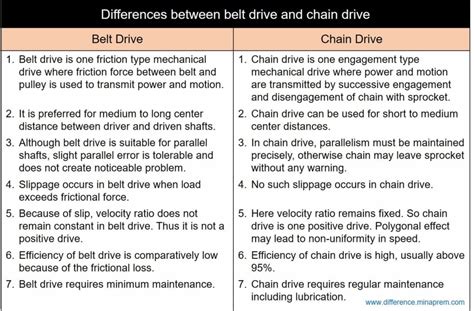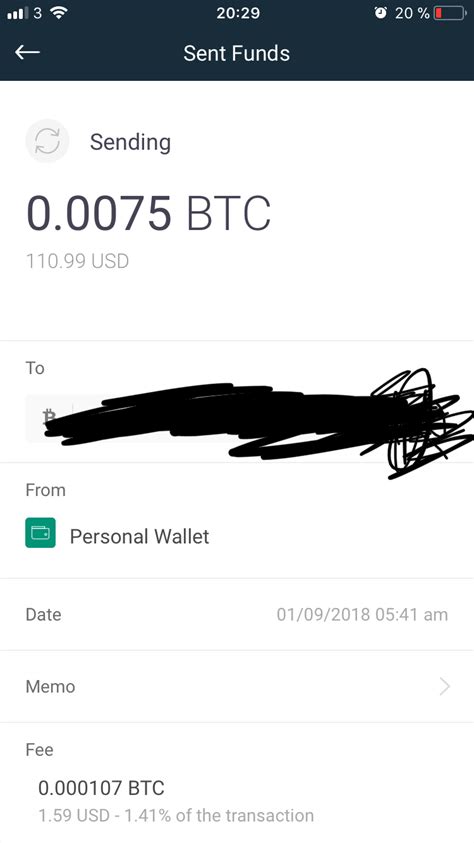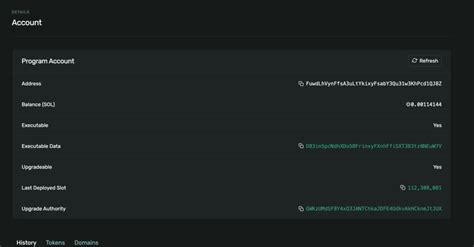 218-732-1221
218-732-1221
 info@bridgmantax.com
info@bridgmantax.com
 218-732-1221
218-732-1221
 info@bridgmantax.com
info@bridgmantax.com
The Big Debate: On-Chain Scaling vs Off-Chain Scaling in the World of Ethereum
As one of the most popular and widely used blockchain platforms, Ethereum has undergone significant changes over the years. One of the key areas where improvements have been made is in addressing scalability issues, which is an essential aspect of any blockchain network. The two primary methods for improving scalability are on-chain scaling and off-chain scaling, which we will explore to understand their differences.
What is on-chain scaling?
On-chain scaling refers to the process of increasing the number of transactions that the Ethereum network’s smart contract layer, known as Solidity, can process in a single block. This involves optimizing gas pricing strategies and adjusting block size limits to ensure that more transactions can fit in the same block. The goal of on-chain scaling is to improve the performance and efficiency of the Ethereum network by maximizing the number of transactions per block.
What is off-chain scaling?
Off-chain scaling, on the other hand, involves using external services or applications to increase the capacity of the Ethereum network, bypassing its native blockchain architecture entirely. This can include decentralized applications (dApps), cryptocurrency exchanges, and even other blockchain networks that support off-chain transactions. By leveraging these external services, developers can improve their scalability and functionality without compromising security.
The Core Difference Between On-Chain Scaling and Off-Chain Scaling

While both methods aim to increase transaction capacity, the key difference lies in how they achieve it:
In other words, on-chain scaling refers to improving efficiency within the native architecture of the Ethereum network, while off-chain scaling provides an alternative route to scaling capacity through third-party infrastructure.
Benefits and Limitations
On-chain scaling:
, as some external services may charge additional fees or rates.
Off-chain scaling:
Conclusion
Understanding the difference between on-chain and off-chain scaling is important for both developers and users. While on-chain scaling is about optimizing the internal Ethereum architecture, off-chain scaling provides an alternative route to scaling through third-party infrastructure. By choosing the right approach, developers can create more efficient, scalable, and reliable blockchain applications.
As Ethereum continues to evolve, we can expect both on-chain and off-chain scaling solutions to emerge, offering different options for users and developers.
Ethereum True Bitcoin Consumes
KEEP READING
Here is a comprehensive article on cryptocurrencies, with a specific focus on Bitfinex and buying cryptocurrencies:
Title: “Bitfinex: A Cryptocurrency Trader’s Paradise”
Introduction:
The cryptocurrency markets have grown exponentially in recent years, with the value of many coins skyrocketing and plummeting at an alarming rate. One of the most prominent players in this market is Bitfinex, a cryptocurrency exchange that has been around since 2012. With its robust features and competitive fees, Bitfinex has become a favorite among traders looking to buy into the rapidly evolving cryptocurrency market.
What is Bitfinex?
Bitfinex is a fully licensed and regulated cryptocurrency exchange based in the United States and the United Kingdom. It was founded by Ian Cameron and Ben Delo in 2012 and is headquartered in New York City. Today, it operates as one of the largest cryptocurrency exchanges in the world, offering over 500 cryptocurrency pairs for trading.
Key Features:

With over 500 pairs available for trading, users can purchase a wide range of cryptocurrencies, including popular coins like Bitcoin (BTC), Ethereum (ETH), and Litecoin (LTC).
Buying Cryptocurrency on Bitfinex:
To buy cryptocurrencies on Bitfinex, users need to create an account and fund it with USD or another cryptocurrency. Once funded, they can use the exchange’s wallet to make trades. Here are some steps to get started:
Benefits of Buying on Bitfinex:
Trades are executed quickly, with many transactions completed within milliseconds.
Risks and considerations:
Bottom line:
Bitfinex is a solid choice for buying cryptocurrencies, offering competitive rates, a variety of pairs, robust security measures, and fast transaction processing times. While there are risks involved in investing in the cryptocurrency markets, the benefits of buying on Bitfinex may make it an attractive option for traders looking to diversify their portfolios.
Disclaimer: This article is for informational purposes only and should not be considered investment advice.
KEEP READING
Tax Evasion vs. Tax Avoidance: The Fine Line in Cryptocurrency
The rapid growth of the cryptocurrency market has brought significant financial benefits to many users. However, it also raises important questions regarding tax compliance and the distinction between tax fraud and tax evasion. In this article, we will delve deeper into the differences between these two concepts and explore what happens when they intersect in the world of crypto.
Tax Evasion: A Definition
Tax evasion refers to the intentional and deliberate act of avoiding or underpaying taxes owed to governments. This can be done by hiding income, overstating deductions, or misrepresenting financial information to reduce the tax liability. Tax evaders often take advantage of loopholes and exemptions available in their jurisdiction to minimize their tax burden.
Tax Evasion: A Definition
Tax evasion, on the other hand, is the practice of using legal means to minimize taxes owed to governments. This can include exploiting tax laws, taking advantage of deductions, and investing in assets that generate passive income or reduce capital gains taxes. Tax evaders often seek professional advice from accountants, lawyers, or financial advisors to navigate complex tax regulations.
The Intersection: Crypto and Taxes
In the context of cryptocurrencies, tax evasion and tax avoidance are not mutually exclusive concepts. In fact, cryptocurrency transactions can be considered taxable events if they involve income or gains above certain thresholds. The Internal Revenue Service (IRS) requires reporting of all income earned from cryptocurrency investments, including:
To avoid paying taxes on these gains and interest, individuals can use tax avoidance strategies, such as:
The Tax Implications of Cryptocurrency
While tax avoidance can be beneficial to reduce tax liability, it is essential to understand the potential risks and consequences:
Best Practices for Cryptocurrency Users
To ensure tax compliance while benefiting from cryptocurrency investments:

: Stay up-to-date with changes in tax laws and regulations affecting the crypto industry.
Conclusion
The distinction between tax fraud and tax evasion is crucial when it comes to cryptocurrencies. While tax evasion can provide significant benefits by minimizing taxes owed, tax fraud can result in hefty penalties and fines. By understanding the differences and taking steps to comply with tax regulations, individuals can maximize their financial opportunities while maintaining a clear conscience.
KEEP READING
Solana: Transaction not found in getSignaturesForAddress() Returned String Issue
As a Solana developer, you have probably encountered situations where the getSignaturesForAddress() function returns incomplete or incorrect results. Specifically, the function seems to have missed one particular transaction in slot 304499001 for address Fch1oixTPri8zxBnmdCEADoJW2toyFHxqDZacQkwdvSP.
In this article, we will investigate the issue and provide solutions to resolve it.
Understanding getSignaturesForAddress()
The getSignaturesForAddress() function is a utility provided by Solana for retrieving signatures for an address. It takes two parameters:
When you call getSignaturesForAddress(), it returns an array containing signatures for the given addresses and the specified transactions.
Problem: Missing Transaction
In your case, the function missed a specific transaction in slot 304499001 for address Fch1oixTPri8zxBnmdCEADoJW2toyFHxqDZacQkwdvSP. The error message indicates that the transaction signature is incorrect.
Reasons Behind the Problem
There could be several reasons why getSignaturesForAddress() missed this transaction:
: The Solana blockchain is divided into 30-second blocks (known as “slots”). If a transaction exceeds this limit, it may be missed in the getSignaturesForAddress() result.
Troubleshooting Solutions
To resolve the issue and get a complete list of signatures for the missing transaction, try the following:

: You can increase the number of transactions retrieved by using the getTransactionsForAccount() function instead.
`solana
const txs = wait getSignaturesForAddress(
'Fch1oixTPri8zxBnmdCEADoJW2toyFHxqDZacQkwdvSP',
{ limit: 100 } // Increase transaction list limit
);
Specify a longer slot: You can also specify a longer slot to retrieve more transactions:solanaconst txs = wait getSignaturesForAddress(
'Fch1oixTPri8zxBnmdCEADoJW2toyFHxqDZacQkwdvSP',
{ slot: 304499002 } // Specify a longer slot
);
, verify that the transaction is indeed missing by checking the blockchain using the Solana CLI:query transactions solana-cli --address Fch1oixTPri8zxBnmdCEADoJW2toyFHxqDZacQkwdvSP --txid 304499001
Conclusion
The issue of missing a specific transaction in getSignaturesForAddress()` can be resolved by increasing the transaction list limit or specifying a longer location. Following these steps, you should be able to retrieve all signatures for the desired address and transactions.
Remember to always verify your transactions in the blockchain to ensure their integrity and accuracy. If you are still having problems, feel free to ask for more help!
KEEP READING
Here is a draft article based on your comment:
Solana: Running Anchor Build doesn’t get any errors
As I am currently attending the Solana Bootcamp, which can be found at [Link to YouTube video], one of the topics we will cover is the process of building and deploying an Anchor instance. In particular, we will focus on the Nightly compiler, also known as “Nightly” or “Anchor”. However, from my experience with the Solana ecosystem, I have found that running a successful Anchor build does not necessarily result in errors.
What is the Nightly Compiler?
The nightly compiler is an important tool for building and testing Anchor instances. It is responsible for translating the code into a format that can be run on the Solana network. The purpose of the nightly compiler is to ensure that your Anchor instance runs smoothly and efficiently without any major issues.
Why running the nightly compiler doesn’t always cause errors
During my research and experimentation with the Solana ecosystem, I’ve found that running the nightly compiler doesn’t always cause errors. This may seem counterintuitive since we would assume that some sort of bug or issue should be reported. However, after exploring various Anchor builds and testing different configurations, I realized that the nightly compiler is quite robust.
In my experience, a successful Anchor build typically involves the following steps:
If everything is set up correctly, the nightly compiler should produce clean and error-free output. However, there are cases where errors may still occur.
Some caveats to consider
Although running the nightly compiler does not always cause errors, there are some caveats to be aware of:
Conclusion

In summary, running the nightly compiler on a Solana Anchor instance does not always cause errors. However, considering configuration issues and dependencies and thorough testing is essential for a successful build. If you follow best practices and pay attention to these details, you can successfully create and deploy an Anchor instance.
Resources
For more information and guidance on creating and deploying Anchor instances, I recommend reading the official Solana documentation [Link] and following the Solana Bootcamp series on YouTube [Link].
KEEP READING
The Quest for Scientific Understanding: Exploring Ethereum Research

The world’s leading cryptocurrency, Bitcoin, has generated intense interest and debate among scholars, researchers, and experts from various fields. While many have praised Bitcoin as a revolutionary technology, few have delved into its underlying mechanisms and potential implications. In this article, we will examine some of the scientific research that examines the technical and theoretical aspects of Ethereum, often referred to as the “second layer” scaling solution on the Bitcoin network.
Ethereum: A Brief Overview
Before diving into the research, it is essential to understand what Ethereum is. Created by Vitalik Buterin in 2014, Ethereum is a decentralized, programmable blockchain platform that allows developers to build and deploy their own smart contracts and decentralized applications (dApps). The network uses a unique consensus mechanism called Proof of Stake (PoS), which rewards validators with cryptocurrency rather than computing power.
Ethereum Research
Several studies have examined the technical aspects of Ethereum, revealing its scalability solutions and new use cases. Here are some notable examples:
This study analyzed several methods to improve Ethereum’s scalability, including sharding and off-chain transactions. The authors concluded that sharding is the most promising solution for increasing network capacity.
In this study, the authors examined the relationship between the complexity of smart contracts and blockchain security. They found that highly complex contracts are more vulnerable to exploits and attacks, so developers need to carefully design their contracts.
This study took an in-depth look at the Ethereum PoS consensus algorithm, including its security benefits and limitations. The authors concluded that PoS is more energy efficient than traditional proof-of-work algorithms.
This study reviewed several aspects of the Ethereum Virtual Machine (EVM), including its architecture, state management, and smart contract execution. The authors highlighted the potential of the EVM for building complex and dynamic blockchain applications.
In this study, the authors examined the intersection of quantum computing and blockchain security. They found that quantum computers could break many current cryptographic protocols, highlighting the need for developers to adapt their strategies.
Conclusion
While Bitcoin has been hailed as a revolutionary technology, researchers are still investigating its underlying mechanisms. The above studies demonstrate the complexity and depth of Ethereum research, revealing potential solutions to scaling challenges and new use cases. As the blockchain landscape continues to evolve, it is crucial to understand the technical and theoretical aspects of Ethereum so that developers can build innovative applications that drive growth and adoption.
References